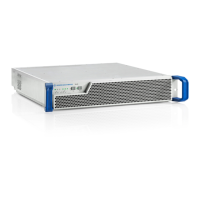Safety Instructions
R&S
®
TLx9
17System Manual 2506.5060.02 ─ 03
2.3 Special Hazard Information
2.3.1 Hazards from AC Supply Voltage
All voltages of Urms > 30 V AC or U > 60 V DC must be regarded as constituting a
shock hazard. When working with voltages that constitute a shock hazard, appropriate
measures must be taken to prevent exposure to danger
. Never work on live compo-
nents. Work on live parts should only be performed in exceptional cases and only if
special safety precautions are taken.
2.3.1.1 AC Power Supply
●
Before connecting the AC power supply, it is important to ensure that the power
supply specifications given for the system or instruments match the nominal speci-
fications for the local power supply network. The power supply circuit must be pro-
tected by means of fuses in order to prevent overloads and short circuits.
●
Miniature modules have neutral conductor fuses. As a result, the power supply
may still be connected even after interruption of the circuit by a fuse.
2.3.1.2 Changing Fuses
●
Fuses which are accessible to the operator should only be changed after the
instruments have been disconnected from the power supply. They must always be
replaced with fuses that have the same electrical rating, tripping characteristics and
breaking capacity.
●
Motor protection switches and automatic line fuses in those parts of a transmitter
system that can be accessed by users must be tripped. If their response range is
adjustable, the ex‑factory setting must not be altered. If settings are changed inad-
vertently, the correct values specified in this documentation must be set.
2.3.2 Hazards from High‑Energy Electric Circuits
The instruments contain low-voltage circuits that can be fed from a voltage source with
an extremely low impedance (e.g. amplifier operating voltage). These circuits carry
dangerously high levels of energy. At Rohde & Schwarz, we treat these circuits in the
same way as circuits with hazardous contact voltages. Normally, these circuits are pro-
tected by covers to prevent unintentional contact. The cover has a warning label.
In practice it has been repeatedly shown that short circuits caused by small metallic
tools result in severe burns. For safety reasons, any high‑energy electric circuits in
areas of the equipment that can be accessed by users are concealed by protective
covers.
●
Exercise the same amount of caution for measurements on low‑impedance vol-
tages (e.g. for repair purposes) that you would when performing measurements on
operating voltages which constitute a shock hazard.
Special Hazard Information

